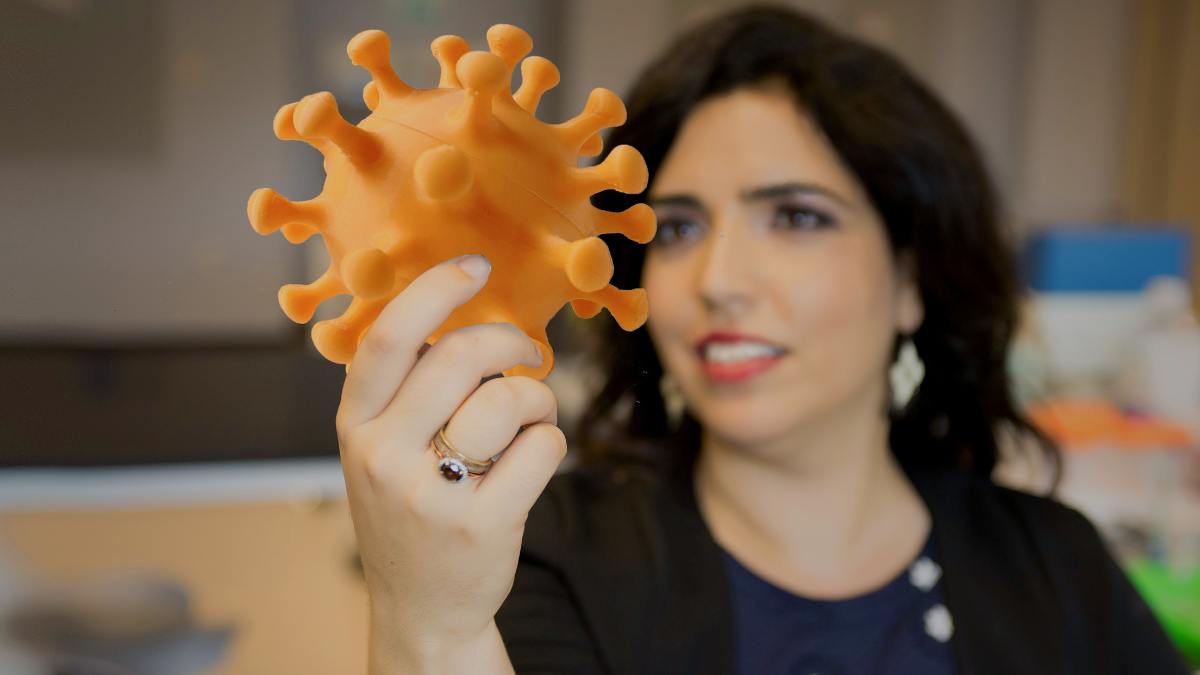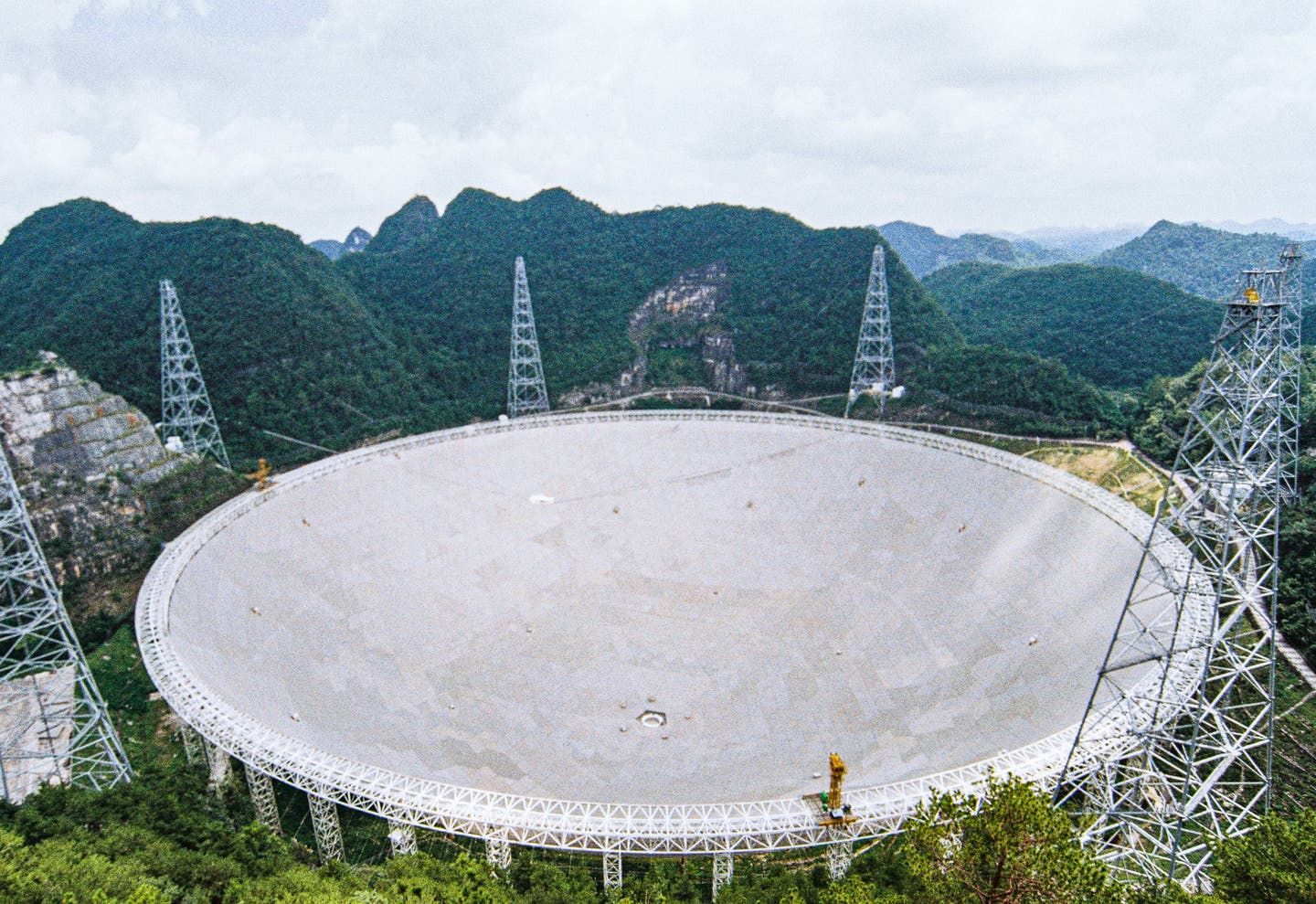Sugar-coated COVID-19 test strip takes advantage of coronavirus’ sweet tooth
Even those tracking each new discovery about the coronavirus and its variants may not be aware of the virus’ sugar cravings.

[Dec 15, 2021: University of North Carolina at Chapel Hill]
Ronit Freeman, a UNC-Chapel Hill associate professor of biomedical engineering and applied physical sciences, studies the way coronaviruses enter cells as well as how to simplify the COVID-19 testing process. (CREDIT: University of North Carolina at Chapel Hill)
Even those tracking each new discovery about the coronavirus and its variants may not be aware of the virus’ sugar cravings.
Researchers at the University of North Carolina at Chapel Hill and University of California San Diego take advantage of the virus’ sweet tooth in the design of a sugar-coated COVID-19 test strip that’s been effective at detecting all known variants of the coronavirus, including delta.
In the next few weeks, researchers will determine if the self-test known as GlycoGrip can detect infections caused by the omicron variant too, said Carolina researcher Ronit Freeman.
“We have turned the tables on the virus by using the same sugar coat it binds to infect cells – to capture it into our sensor,”said Freeman, who published the findings in ACS Central Science.
The test is inspired by the natural biology of epithelial cells – those that are targeted and infiltrated by SARS-CoV-2, the virus that causes COVID-19. These cells are coated with a dense matrix of sugars called the glycocalyx, and it’s this sugar net that the virus exploits to cause infection.
Related Stories:
The concept is intuitive: a droplet of biofluid containing the virus, such as saliva, is placed on one end of the strip and flows along the surface. When the fluid reaches a sugar-coated patch, the virus can’t help but indulge its sweet tooth, becoming trapped on that specific area.
This capture is then signaled by antibodies treated with gold nanoparticles producing a visual color that indicates infection.
“We tapped into nature to reimagine viral diagnostics,” said Freeman, co-corresponding author of the paper and associate professor of applied physical sciences and biomedical engineering in the UNC-Chapel Hill College of Arts & Sciences.
To better understand how these sugar polymers bind the virus, Freeman connected with Rommie Amaro, professor of chemistry and biochemistry at the University of California San Diego and co-corresponding study author.
Amaro and her team developed computationally intensive simulations that helped explain the mechanics behind how and why the cell-anchored sugars bind the viral spikes.
“By using atomic-level views of the spike protein, we were able to identify key binding sites for the glycocalyx sugar polymers and unlock how these sugars adapt to different spike conformations,” said Amaro. “This is exciting, we essentially revealed another secret of how spike binds cells to facilitate infection.”
One of the greatest challenges of the ongoing COVID-19 pandemic has been responding to the virus’ mutations and emerging variants. New tests must be developed for new tweaks in the virus’ genetic code.
But GlycoGrip offers a solution for universal coronavirus testing.
“We are optimistic that GlycoGrip will capture future variants just as easily,” Freeman said.
A patent has been filed for this new technology, and looking beyond the current pandemic, the team envision a future in which GlycoGrip can offer cheap and reliable testing for a wide range of viruses.
The paper is titled “GlycoGrip: Cell Surface-inspired Universal Sensor for Betacoronaviruses.” The full author list includes: Sanghoon Kim, Fiona Kearns, Mia Rosenfeld, Lorenzo Casalino, Micah J. Papanikolas, Carlos Simmerling, Rommie E. Amaro, and Ronit Freeman. https://doi.org/10.1021/acscentsci.1c01080
The research was funded by Research Corporation for Science Advancement (COVID Initiative grant #27350) award, the North Carolina Policy Collaboratory at the University of North Carolina at Chapel Hill with funding from the North Carolina Coronavirus Relief Fund established and appropriated by the North Carolina General Assembly, NSF RAPID (DMS-2028758, MCB-2032054), UNC Institute for Convergent Science Director’s Fund, NIH GM132826, and UC San Diego Moores Cancer Center 2020 SARS-COV-2 seed grant.
Note: Materials provided above by University of North Carolina at Chapel Hill. Content may be edited for style and length.
Like these kind of feel good stories? Get the Brighter Side of News' newsletter.
Tags: #New_Discovery, #COVID_19, #Medical_News, #COVID_Test, #Glucose, #Science, #Research, #The_Brighter_Side_of_News



